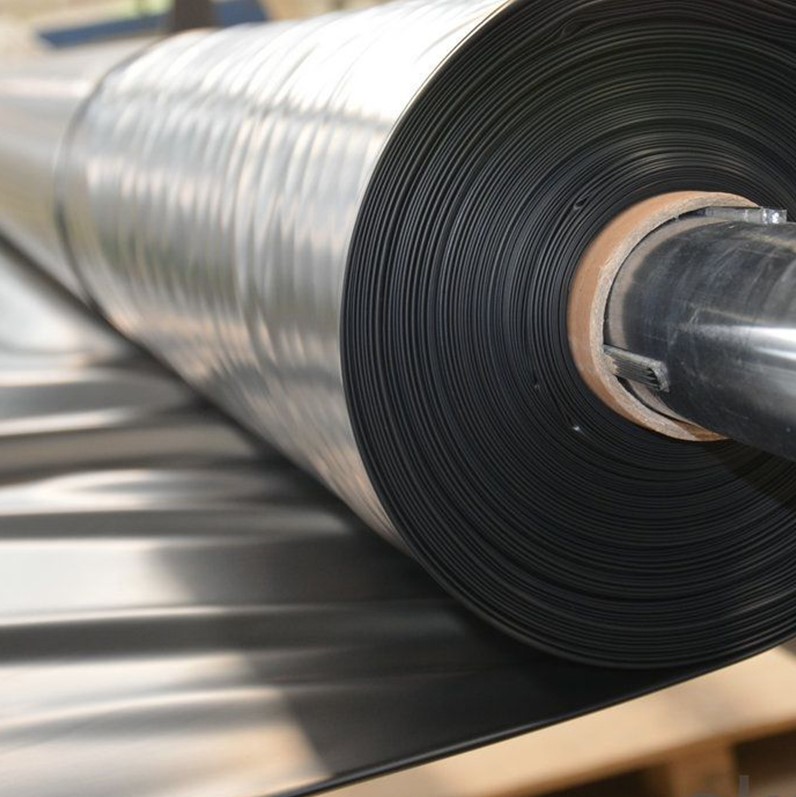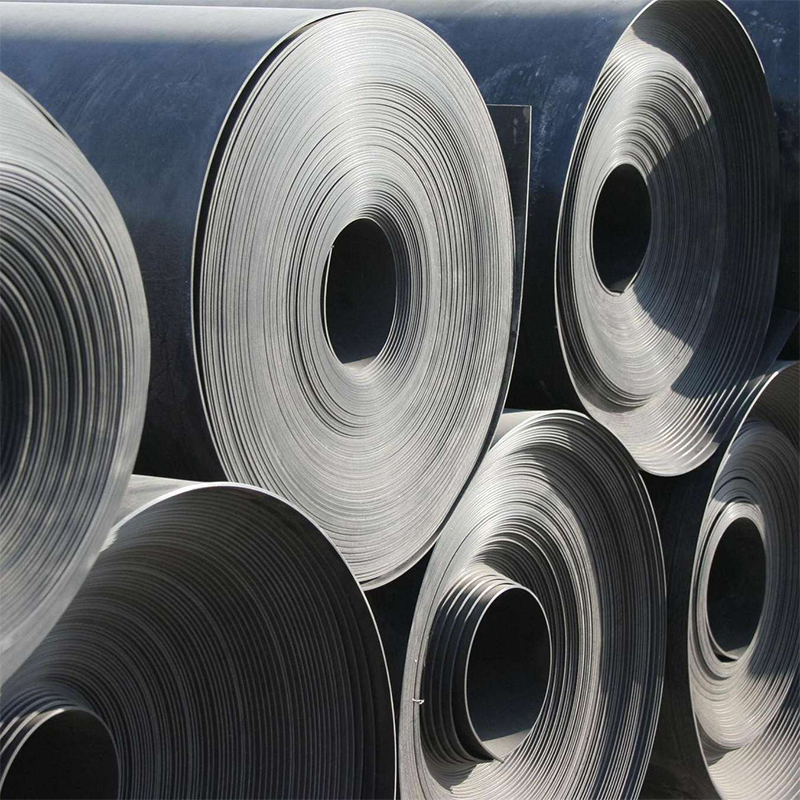HDPE geomembrane is made of polyethylene particles through the calendering process (film coating) or blow molding process (blown film) of the production equipment, and finally rolls.
HDPE geomembrane
The rough HDPE geomembrane is divided into two types, namely: column point rough HDPE geomembrane and spray rough HDPE geomembrane.

Column point rough surface HDPE geomembrane
The column point rough HDPE geomembrane is also produced by a calendering process, but it is a HDPE geomembrane with a uniform height column point appearance on one or both sides produced by a special calendering process.
Rough surface HDPE geomembrane
The rough surface HDPE geomembrane is roughened twice on the basis of the finished HDPE geomembrane, which we call the roughening process.
Spray Rough Surface HDPE Geomembrane and Column Point Rough Surface HDPE Geomembrane
Whether it is a column point rough HDPE geomembrane or a spray rough HDPE geomembrane, their functions are the same. It is all to increase the coefficient of friction and anti-skid effect, so as to facilitate the laying of surrounding slopes or steep slopes and vertical seepage of engineering projects such as landfills, fish ponds, artificial lakes, etc., to facilitate the secondary laying of geotextiles, and to strengthen the membrane. resistance to load-bearing deformation.

Polyethylene hdpe geomembrane properties
Polyethylene hdpe geomembrane is a waterproof barrier material with high molecular polymer as the basic raw material.
Mainly divided into: polyethylene (LDPE) geomembrane, high density polyethylene (HDPE) geomembrane and EVA geomembrane.
- The width and thickness are complete.
- It has excellent resistance to environmental stress cracking and excellent chemical corrosion resistance.
- Excellent chemical corrosion resistance.
- It has a large operating temperature range and a long service life.
- Used in landfill, tailings storage, channel seepage prevention, dam seepage prevention and subway engineering
The main mechanism is that the water-impermeability of the plastic film blocks the leakage channel of the earth dam, and it can withstand water pressure and adapt to the deformation of the dam body with its large tensile strength and elongation; and the non-woven fabric is also a kind of polymer short fiber chemical. The material, formed by needle punching or thermal bonding, has high tensile strength and extensibility. After it is combined with the plastic film, it not only increases the tensile strength and puncture resistance of the plastic film, but also due to the rough surface of the non-woven fabric, The friction coefficient of the contact surface is increased, which is beneficial to the stability of the protective layer. At the same time, they have good corrosion resistance to chemical action, are not afraid of acid, alkali and salt erosion, and have a long service life when used in the dark.
Polyethylene HDPE geomembrane has excellent resistance to environmental stress cracking, low temperature resistance, aging resistance, corrosion resistance, and a large operating temperature range (-60–+60) and a long service life of 50 years, widely used Anti-seepage projects in domestic waste landfills, solid waste landfills, sewage treatment plants, artificial lakes, tailings treatment and other anti-seepage projects.
